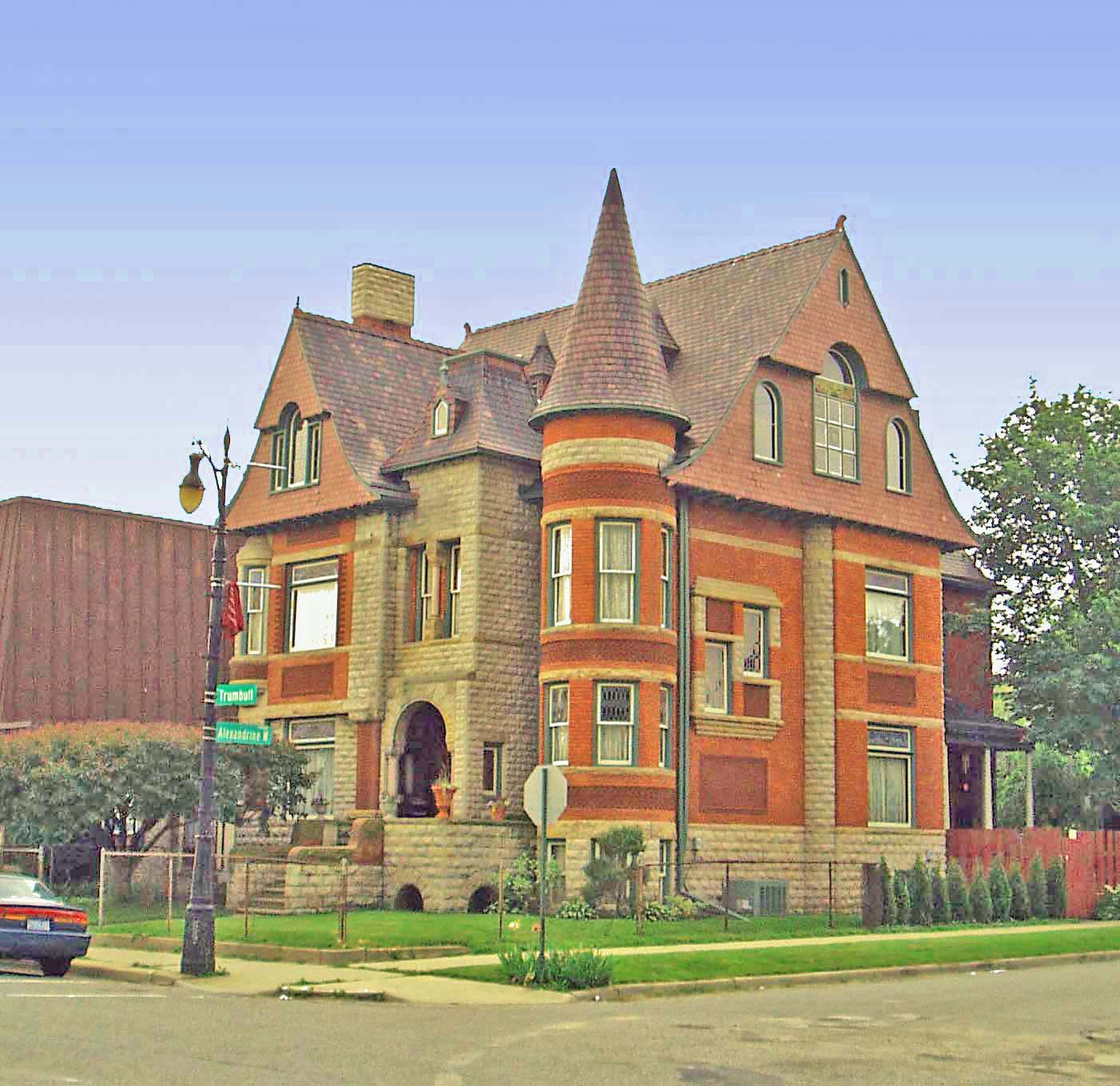
William Northwood Home

Prosperous Detroit entrepreneurs had several choices with regard
to where they would build their magnificent homes in the latter years of the
Nineteenth Century when Detroit became a leading industrial metropolis. Perhaps,
the most prestigious locations were along Woodward, or just off Woodward,
in the
places we now know as the West Canfield
Historic District, or the East
Ferry Historic District, or the block of West Hancock between Woodward
and Cass. Another
alternative was the Woodbridge neighborhood extending along Trumbull northwest
from its intersection with Myrtle and West Grand River.
Malt consists of barley—or oats. They are steeped in cold water for approximately 30 hours. It is then allowed to germinate for four days in a moist and cool environment. Then the germinating grain is slowly kiln-dried at slowly increasing temperatures. Malt is used by a brewer to minimize the potential bitter taste of beer. It is basically, a process of sacharinification, so malt liquors tend to taste rather sweet compared to ales.
Perhaps beer was first brewed in Detroit in 1829, the year Alexis de Tocqueville visited the villages. Two years later, Farmer’s Brewery was advertising its product. Early brewers in Detroit had to either make their own malt or import it from the nearest accessible malt factory, which was in Buffalo.
In 1870, W. J. Howard and William Northwood founded a small malting business near Chatham, Ontario using the barley that grew well in that area south of Lake St. Clair. Their business grew rapidly, and within a decade they were Canada’s leading exporter of malt. Since Detroit brewers bought much of their product, they established a malt factory at the foot of Lafayette in about 1880. By 1884, they processed 400,000 bushels of barley, much of it arriving by boat. In 1895, W. J. Howard died, so William Northwood took over the firm.
Until the prohibition, every large city had dozens of local brewers. Their history is very interesting for they were ethnically specific. That is, the style of beer produced by German migrants to the United States differed a bit from the style brewed by Czech or Polish immigrants. Thus, a study of the history of beer in a city reveals much about the size and geographic location of the immigrants who arrived in the latter half of the Nineteenth Century. There is an excellent and extremely informative history of brewing in Detroit: Brewed in Detroit Brewers and Beers Since 1830, by Peter H. Blum and published by Wayne State University Press in 1999.
The Woodbridge neighborhood was selected by William Northwood for the magnificent home designed by George F. DePew. He was one of the city’s leading architects in the decade or so before the emergence of Mason, Malcomson and then Albert Kahn as Detroit’s leading architects; that is, in the 1880s. Northwood or DePew selected the elaborate Chateauesque style. Note the very many straight lines, the circles, the cones and a turret included in this home. The more you stare at this home, the greater the variety of styles that you see. There is an attractive but massive stone archway entrance. To the right is a tower topped by a cone, suggesting a Medieval influence. The visible sides of the home differ greatly one from another. You also see a variety of shapes of windows and sloping front gables with shingles. There is a Mansard roof with a projecting bay window known as an oriel. To add color, the architect used yellow, red and white sandstone, and alternated that sandstone with decorative brickwork. You will see elaborate metal cresting used as ornamentation on the roof, and also, small polished jasper columns known as colonettes. Some will find this immense array of architectural creativity pleasing, while others wonder why Mr. DePew incorporated so many different planes, arches, and circles.
The Northwood family lived in this home from 1891 to 1903 when it was sold to the Sullivan family—the family that founded the Sullivan Beef Company. The Sullivans resided in this mansion until 1957. In 1966, a side porch and a conservatory linked to the Northwood Home were removed.
During the 1960s and 1970s, the many elegant homes in the Woodbridge Historic District fell into disrepair. The fate of this neighborhood changed in the 1990s with changes in the economy and some diminution of racial strife in Detroit. People started buying these impressive, late-Nineteenth Century homes at relatively low cost and improving them. The Northwood home was one of the first to be renewed to its original elegance. For some time, it was the Woodbridge Star Bed and Breakfast, but I believe that it is now a private residence.
The Woodbridge Historic District, in 2004, contained some magnificently restored homes, some undergoing remodeling and some still very clearly in disrepair. It will be interesting to observe the evolution of this neighborhood in the next few years. It has the great advantage of having a marvelous stock of Victorian-era homes and being located close to Detroit’s downtown and Cultural Center employment hubs. It has the disadvantage of being very close to several dilapidated and troubled neighborhoods. The City of Detroit has yet to decide about the development of the West Side Hay Market/Navin Field/Briggs Stadium/Tiger Stadium at Michigan and Trumbull where professional baseball was played from April, 1893 through September, 1999. The use of that land might also influence the future of the nearby Woodbridge Historic District.
Date of Construction: 1891
Architect: George F. DePew
Architectural Style: Chatequesque
City of Detroit Local Historic District: Not listed
State of Michigan Registry of Historic Sites: P25189; Listed July 26, 1974
National Register of Historic Sites: Listed December 31, 1974
Use in 2004: A private residence, I believe
Photo: Ren Farley; June 6, 2004